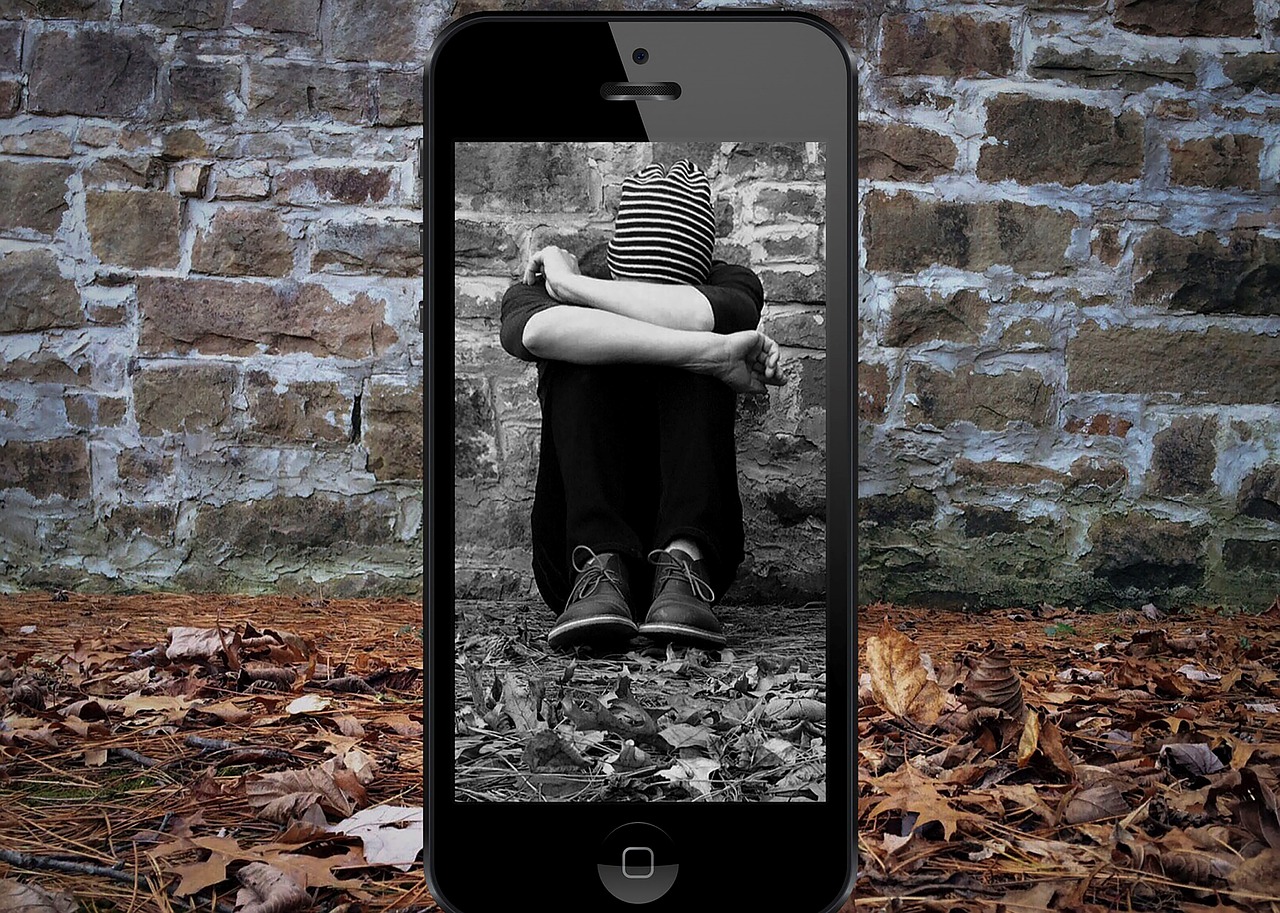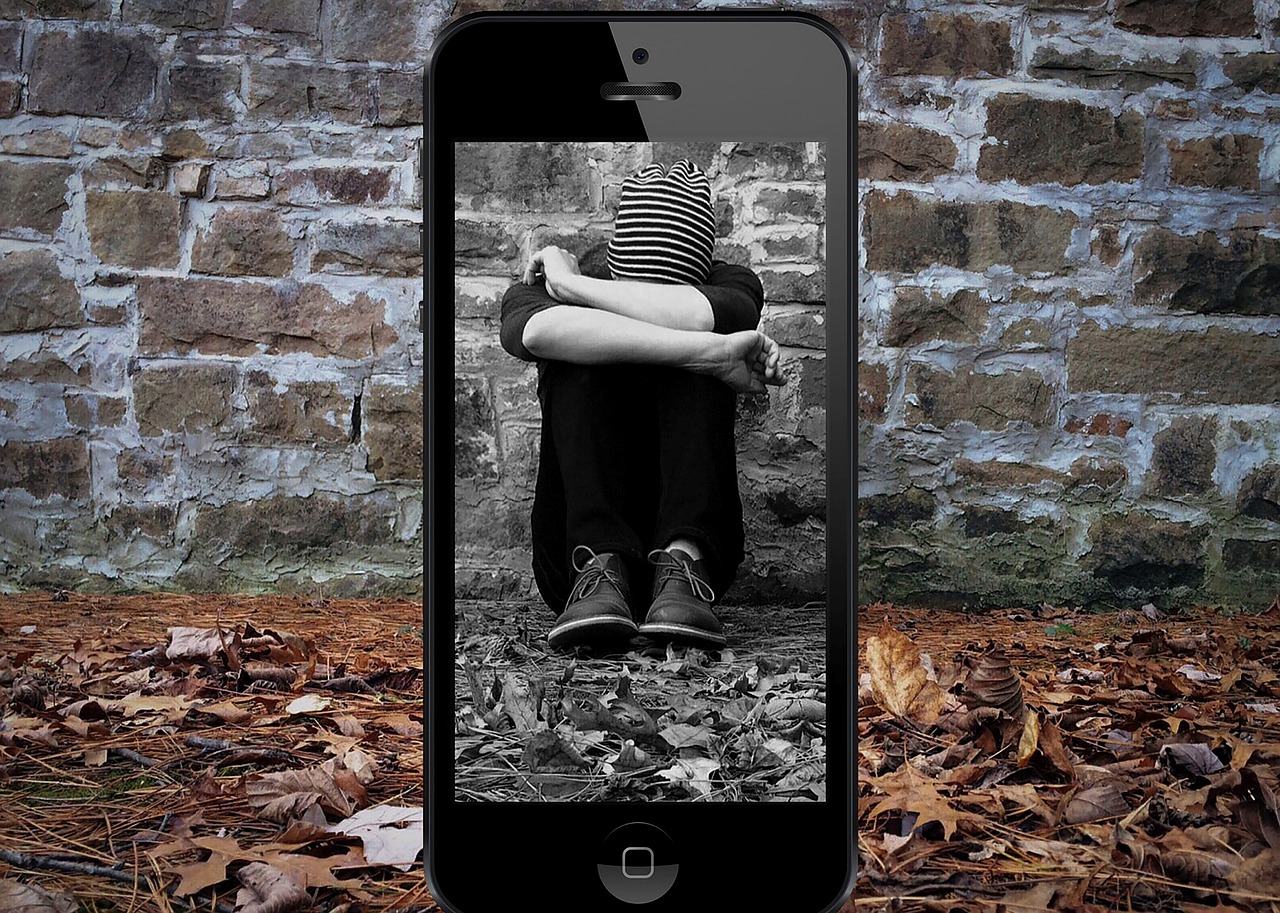Internet Trolls and Cyberbullies: A Safety Guide
This article explores the nature of internet trolls and cyberbullies, providing insights into their behaviors, the impact on victims, and effective strategies for protection and recovery.
Internet trolls are individuals who intentionally provoke and upset others online. They thrive on the anonymity that the internet provides, often hiding behind fake profiles to unleash their vitriol. But why do they do it? The motivations behind trolling can be as varied as the trolls themselves. Some might be seeking attention, while others might derive pleasure from the chaos they create. It's like throwing a rock into a calm pond; the ripples of their actions can disrupt the lives of those caught in the splash zone.
Psychologically, trolls often exhibit traits such as low empathy, high aggression, and a desire for dominance. This combination allows them to engage in behavior that can be incredibly damaging. Understanding these motivations is crucial for recognizing that their actions are more about their issues than the victims they target. It's a sad reality, but the trolls' need for validation often comes at a severe cost to others.
Cyberbullies, much like trolls, often target their victims to exert power and control. The thrill of intimidation can be intoxicating for some, creating a cycle of abuse that can be hard to break. These individuals typically share common psychological traits, such as a lack of empathy and a propensity for manipulation. They may have experienced bullying themselves or may struggle with self-esteem issues, leading them to project their insecurities onto others.
In many cases, cyberbullies don't see their actions as harmful. Instead, they might rationalize their behavior by believing that they are simply "joking" or "having fun." This denial can perpetuate the cycle of bullying, making it all the more important to address the issue head-on.
Cyberbullying can take many forms, each with its own unique characteristics and impacts on victims. Understanding these types is essential for recognizing when someone is being targeted. Here are some common forms:
- Harassment: This involves repeated aggressive messages or threats aimed at an individual.
- Impersonation: Cyberbullies may create fake profiles to impersonate someone else, often to spread rumors or misinformation.
- Exclusion: This subtle form of bullying involves intentionally excluding someone from online groups or activities, leading to feelings of isolation.
Harassment is one of the most overt forms of cyberbullying, characterized by repeated aggressive messages or threats. Victims may receive a barrage of hateful comments, which can escalate quickly. Signs of harassment can include:
- Receiving threatening messages.
- Being targeted with derogatory comments.
- Noticing a pattern of aggressive behavior from the same individual or group.
It's essential to respond to harassment swiftly. Victims should document the incidents and consider reporting them to the platform in question. Seeking help from friends, family, or professionals can also provide crucial support during such a distressing time.
Exclusion is a more insidious form of bullying that can have profound emotional impacts. This type of cyberbullying often manifests through social media, where individuals are left out of conversations or group activities. The emotional fallout can be devastating, leading to feelings of worthlessness and loneliness. Victims may find themselves questioning their self-worth, wondering why they were excluded in the first place.
Identifying the signs of being targeted by trolls or cyberbullies is crucial for intervention. Common indicators that someone may be a victim include:
- Changes in behavior, such as withdrawal from social activities.
- Increased anxiety or depression.
- Visible distress when using the internet or social media.
Friends and family should be vigilant and ready to offer support if they notice these signs. A compassionate approach can make a significant difference in a victim's recovery process.
Taking proactive steps can help mitigate the risks posed by trolls and cyberbullies. One of the most effective strategies is adjusting privacy settings on social media. By limiting who can view their profiles and posts, individuals can significantly reduce their exposure to potential harassment.
Adjusting privacy settings on social media platforms is essential for enhancing personal safety. Users should familiarize themselves with the privacy options available on each platform and customize them according to their comfort levels. For instance, setting profiles to "private" can restrict access to only friends and family, minimizing unwanted interactions.
Most platforms offer features to report and block bullies. Utilizing these tools effectively can protect users from further harm. It's important to remember that reporting is not just about punishing the bully; it's also about creating a safer online environment for everyone. Users should not hesitate to block individuals who engage in harmful behavior, as this can be a powerful way to reclaim their online space.
Supporting those affected by trolling and cyberbullying is essential for their recovery. Friends and family play a crucial role in this process. They can provide emotional and practical assistance, helping victims navigate the complex feelings that arise from being targeted.
Encouraging victims to share their experiences can foster healing. Creating a safe space for victims to express their feelings and fears is vital. Open communication allows for understanding and validation, which can be incredibly comforting in a time of distress.
Sometimes, professional intervention is necessary. If a victim is struggling to cope with the effects of cyberbullying, seeking help from mental health professionals can provide the support they need. These experts can offer coping strategies and therapeutic techniques to help victims rebuild their self-esteem and resilience.
Q: What should I do if I encounter a troll online?
A: The best course of action is to ignore them and not engage. You can also report and block them on the platform.
Q: How can I support a friend who is being cyberbullied?
A: Encourage them to talk about their experiences and let them know you are there for them. Help them document incidents and consider reporting the bullying.
Q: Are there legal actions I can take against cyberbullies?
A: Yes, depending on the severity of the bullying, legal action may be an option. It's advisable to consult with a legal professional for guidance.

Understanding Internet Trolls
Internet trolls are the modern-day tricksters of the digital world, lurking in the shadows of online forums, social media platforms, and comment sections. They thrive on provocation and chaos, aiming to upset others for their own amusement. But why do they do this? The motivations behind trolling are as varied as the trolls themselves, often stemming from a mix of anonymity, a desire for attention, and sometimes even personal issues. It’s like watching a child throw a tantrum in a store; they want to be seen, even if it’s for all the wrong reasons.
One of the key psychological aspects of trolling is the sense of power it gives to the troll. In a world where many feel powerless, the internet offers a unique platform where individuals can hide behind a screen and unleash their frustrations on others. This anonymity can lead to a disconnection from reality, where the troll doesn’t fully grasp the impact their words can have on real people. It’s a bit like throwing stones from behind a wall; they may not see the damage they cause, but the hurt is very real.
Moreover, trolls often engage in these behaviors because they find it entertaining. They may view their actions as a game, where the goal is to trigger emotional responses from their victims. This can create a cycle of trolling where the more a victim reacts, the more the troll feels compelled to continue their antics. It’s a vicious cycle, much like a dog chasing its tail, where the excitement of the chase overshadows the harm being inflicted.
Understanding the nature of internet trolls is crucial for recognizing their behavior and protecting oneself from their attacks. Here are some common traits that define a troll:
- Anonymity: Most trolls hide behind fake profiles or usernames, allowing them to evade accountability.
- Provocation: They often post inflammatory comments designed to elicit strong reactions.
- Attention-Seeking: Trolls thrive on the attention they receive, whether it’s negative or positive.
- Low Empathy: They typically lack the ability to understand or care about the feelings of others.
In essence, internet trolls are a reflection of the darker side of human nature, fueled by anonymity and a desire for control. Recognizing their tactics and understanding their motivations is the first step towards defending yourself against their negative influence. This knowledge can empower individuals to navigate the online world more safely and confidently, ensuring that they don’t become unwitting victims in the troll's game.

The Psychology of Cyberbullies
Understanding the psychology behind cyberbullies is crucial in combating their harmful behavior. At the core, cyberbullies often exhibit a need for power and control, which drives them to target vulnerable individuals online. This need can stem from various factors, including personal insecurities, past experiences of being bullied themselves, or a desire for social acceptance. In many cases, the anonymity provided by the internet emboldens these individuals, allowing them to act out in ways they might not dare to in face-to-face interactions.
Research indicates that many cyberbullies possess certain psychological traits that contribute to their actions. For instance, they may demonstrate a lack of empathy, making it easier for them to dehumanize their victims and justify their cruel behavior. Additionally, some studies suggest that cyberbullies often have inflated senses of self-worth, which can lead them to believe they are superior to others. This superiority complex can manifest in aggressive online behavior as they attempt to assert dominance over their victims.
Moreover, the digital landscape can create an environment where cyberbullying behaviors are normalized. The prevalence of negative interactions online can desensitize individuals, making them more likely to engage in or overlook harmful actions. Cyberbullies may also find a sense of community among like-minded individuals, further reinforcing their negative behaviors. Understanding these dynamics is essential for addressing the root causes of cyberbullying and developing effective prevention strategies.
It's also important to recognize that not all cyberbullies fit a specific mold. They can come from various backgrounds and age groups, and their motivations can differ widely. Some may bully for entertainment or thrill, while others may do it to gain social status or fit in with a particular group. This diversity in motivations means that effective interventions must be tailored to the specific context and individual involved.
In summary, the psychology of cyberbullies is complex and multifaceted. By understanding the underlying motivations and psychological traits that drive these individuals, we can better equip ourselves to address the issue of cyberbullying and support its victims. This knowledge not only helps in identifying potential bullies but also in creating a safer online environment for everyone.
- What motivates someone to become a cyberbully?
Cyberbullies are often motivated by a desire for power, control, or social acceptance. They may also have personal insecurities or past experiences of being bullied themselves.
- Can cyberbullies change their behavior?
Yes, with proper intervention, support, and understanding of their actions, many cyberbullies can change their behavior and learn healthier ways to interact online.
- How can victims of cyberbullying cope with the emotional impact?
Victims can cope by seeking support from friends and family, engaging in open communication about their experiences, and, if necessary, consulting mental health professionals.

Types of Cyberbullying
Cyberbullying is a multifaceted issue that manifests in various forms, each with its unique characteristics and impact on victims. Understanding these types is crucial for recognizing and addressing the problem effectively. At its core, cyberbullying can be categorized into several distinct types, including harassment, impersonation, and exclusion. Each type operates differently but shares a common goal: to harm or belittle the victim.
One of the most prevalent forms of cyberbullying is harassment. This involves the repeated sending of aggressive messages or threats, often through social media platforms, email, or text messages. Harassment can escalate quickly, leaving the victim feeling trapped and vulnerable. The emotional toll can be severe, as the victim may feel as if there is no escape from the relentless barrage of negativity. Recognizing the signs of harassment is essential for both victims and their support systems, as early intervention can make a significant difference.
Another common type is impersonation, where the bully creates a fake account to mimic the victim. This can lead to confusion and distress, as the impersonator may post harmful content or engage with others in a way that damages the victim's reputation. The psychological impact of impersonation can be profound, as it undermines the victim's sense of identity and safety online. Victims often report feeling as if they are living in a nightmare, unable to control how others perceive them due to the actions of a malicious impersonator.
Exclusion is a more subtle yet equally damaging form of cyberbullying. This type involves deliberately excluding someone from online groups, chats, or social media interactions. The emotional impact of exclusion can be devastating, as it fosters feelings of isolation and loneliness. Victims may find themselves questioning their worth and feeling abandoned by their peers, which can lead to long-term psychological effects. It's crucial to understand that exclusion is not just a minor annoyance; it can have serious consequences for the victim's mental health.
In summary, the types of cyberbullying—harassment, impersonation, and exclusion—illustrate the diverse ways in which individuals can be targeted online. Recognizing these forms is the first step toward combating cyberbullying effectively. By understanding the nuances of each type, we can better equip ourselves and others to address and prevent these harmful behaviors.
- What is the difference between trolling and cyberbullying?
Trolling often involves provoking others for amusement, while cyberbullying is targeted harassment intended to harm the victim. - How can I report cyberbullying?
Most social media platforms have reporting features that allow you to report abusive behavior. It's essential to document incidents before reporting. - What should I do if I am a victim of cyberbullying?
Reach out to friends or family for support, document the incidents, and consider reporting the behavior to the platform or authorities. - Can cyberbullying affect mental health?
Yes, victims of cyberbullying often experience anxiety, depression, and other mental health issues as a result of their experiences.

Harassment and Threats
Harassment and threats are among the most disturbing forms of cyberbullying that individuals can encounter online. Imagine receiving a barrage of aggressive messages, or worse, threats that leave you feeling unsafe in your own digital space. This type of behavior is not just a nuisance; it can have serious emotional and psychological repercussions for the victim. Understanding the signs of harassment is crucial for both victims and their support systems.
Harassment typically involves repeated aggressive messages, often aimed at instilling fear or anxiety in the target. These messages can take various forms, including:
- Direct threats: Clear and explicit threats to harm the victim.
- Intimidation: Messages designed to instill fear or manipulate the victim into silence.
- Derogatory comments: Insults and slurs that aim to belittle and demean the victim.
Recognizing these signs is the first step toward addressing the issue. Victims may notice a pattern where certain individuals consistently target them, leading to feelings of isolation and helplessness. It's essential for friends and family to be vigilant and supportive, as the emotional toll can be overwhelming. Victims often experience anxiety, depression, and a profound sense of vulnerability. If you or someone you know is facing harassment, it’s important to respond effectively.
Here are some strategies for dealing with harassment:
- Document everything: Keep records of all messages, including screenshots and timestamps. This documentation can be crucial if you decide to report the harassment.
- Do not engage: Responding to trolls can sometimes escalate the situation. It's often best to ignore them.
- Seek support: Talk to trusted friends or family members about what you’re experiencing. Sharing your feelings can help alleviate some of the emotional burden.
Additionally, many online platforms have mechanisms in place to help users combat harassment. Reporting tools can be effective in addressing the behavior of trolls and cyberbullies. Familiarize yourself with the reporting features of the platforms you use, as they can provide a layer of protection. Remember, you are not alone in this fight; there are resources available to help you regain control over your online presence.
Ultimately, the impact of harassment and threats can be profound, but with the right tools and support, victims can reclaim their power and find healing. If you or someone you know is experiencing harassment, reaching out for help is a vital step toward recovery.
Q1: What should I do if I am being harassed online?
A1: If you are being harassed, document all interactions, do not engage with the harasser, and report the behavior to the platform. Seeking support from friends or professionals can also be beneficial.
Q2: Can I report harassment on all social media platforms?
A2: Most major social media platforms have reporting features. Familiarize yourself with these tools and use them to report abusive behavior.
Q3: How can I protect myself from becoming a victim of cyberbullying?
A3: Adjust your privacy settings, be cautious about what you share online, and consider using blocking features to prevent unwanted contact.
Q4: When should I seek professional help?
A4: If you find that harassment is significantly affecting your mental health, it may be time to consult a mental health professional for support and guidance.

Exclusion and Isolation
Exclusion and isolation are among the most insidious forms of cyberbullying, often leaving victims feeling invisible and utterly alone. Unlike overt harassment, which can be loud and aggressive, exclusion operates in the shadows, subtly undermining a person's sense of belonging. Imagine walking into a room filled with people you thought were friends, only to realize that they’re whispering and laughing, deliberately leaving you out. It’s a painful experience that can lead to long-lasting emotional scars.
Online, this form of bullying can manifest in various ways, such as:
- Ignoring messages: When a group chat is buzzing with activity, and your messages go unanswered, it can feel like a punch to the gut.
- Social media exclusion: Not being tagged in photos or events that others are included in can create feelings of inadequacy.
- Creating cliques: Groups that form and actively exclude certain individuals can make the online environment feel hostile and unwelcoming.
The emotional toll of exclusion is significant. Victims may experience a range of feelings, from sadness and anger to anxiety and depression. It’s as if a fog has settled over their lives, making it difficult to see the bright spots. In many cases, individuals may start to withdraw from social interactions altogether, fearing further rejection. This cycle of isolation can lead to a decline in mental health, making it crucial for friends and family to recognize the signs and offer support.
Moreover, the anonymity of the internet can amplify the effects of exclusion. Unlike face-to-face interactions, where body language and tone can convey empathy, online interactions often lack these nuances. Victims may find it challenging to articulate their feelings or seek help, fearing that their struggles will be dismissed or misunderstood. This is why fostering an environment of open communication is vital, allowing victims to share their experiences without judgment.
In conclusion, exclusion and isolation are not just minor inconveniences; they can have profound effects on an individual’s mental well-being. Recognizing these behaviors and understanding their impact is the first step towards creating a more supportive online community. By addressing exclusion head-on, we can help build a digital space where everyone feels valued and included.
- What should I do if I notice someone being excluded online?
If you see someone being excluded, reach out to them privately. A simple message expressing your support can go a long way in making them feel less isolated.
- How can I support a friend who feels isolated?
Encourage them to talk about their feelings. Let them know they are not alone and that you are there for them. Sometimes, just listening can make a significant difference.
- Is it important to report exclusionary behavior?
Yes, reporting such behavior can help create a safer online environment. It alerts moderators to the issue and can lead to necessary actions being taken against the bullies.

Recognizing the Signs
When it comes to the world of internet trolls and cyberbullies, recognizing the signs can be your first line of defense. It’s crucial to be aware of the subtle cues that indicate someone might be a victim of online harassment. Often, these signs can be missed or dismissed, but they are vital for friends and family to notice. So, what should you look out for?
Victims of trolling and cyberbullying may exhibit a range of emotional and behavioral changes. Common indicators include:
- Withdrawal from Social Interactions: If someone suddenly becomes less active on social media or avoids gatherings, it might be a sign they are feeling overwhelmed by online interactions.
- Changes in Mood: Noticeable shifts in mood, such as increased anxiety, depression, or irritability, can point to the emotional toll of being targeted.
- Decline in Academic or Work Performance: A drop in grades or productivity can indicate that the individual is distracted or distressed due to online bullying.
- Physical Symptoms: Complaints about headaches, stomachaches, or other unexplained physical ailments can sometimes be linked to the stress of cyberbullying.
Moreover, it’s essential to pay attention to any changes in their online behavior. For instance, if they start deleting accounts or blocking friends, this may indicate they are trying to escape a hostile online environment. Additionally, a sudden increase in privacy settings or the use of anonymous accounts can also be a red flag.
Another significant sign to recognize is if the individual begins to express fear or anxiety about going online. This feeling can manifest through comments like, “I dread checking my messages” or “I can’t stand being on social media anymore.” These statements can be a cry for help, signaling that the person is feeling overwhelmed by negative interactions.
Lastly, if you notice someone frequently discussing or showing signs of distress related to specific online interactions or users, it’s crucial to take these feelings seriously. Engaging in open conversations about their experiences can help them feel supported and less isolated. Remember, the earlier you recognize these signs, the sooner you can offer help and support to those in need.
1. What should I do if I suspect someone is being cyberbullied?
If you suspect someone is being cyberbullied, it’s important to approach the situation with empathy. Encourage them to talk about their experiences and offer your support. It may also be necessary to report the bullying to the appropriate authorities or platform.
2. How can I protect myself from becoming a victim of cyberbullying?
To protect yourself, ensure your privacy settings are adjusted on social media platforms. Be cautious about who you share personal information with, and consider using blocking and reporting features to deal with any unwanted interactions.
3. What are the long-term effects of cyberbullying?
The long-term effects of cyberbullying can include anxiety, depression, and a decrease in self-esteem. Some victims may also experience difficulties in forming relationships or trusting others in the future.
4. Can cyberbullying happen to adults?
Yes, cyberbullying can happen to individuals of all ages, including adults. It often occurs in professional settings or online communities, and the effects can be just as damaging.

Protective Measures
In today's digital landscape, the threat of internet trolls and cyberbullies looms large, but the good news is that there are effective you can take to safeguard yourself and your online experience. It's like having an umbrella on a rainy day; while you can't stop the rain, you can certainly stay dry. By implementing these strategies, you can create a safer online environment for yourself and others.
First and foremost, adjusting your online privacy settings is a crucial step in protecting yourself from unwanted attention. Most social media platforms offer a plethora of privacy options, allowing you to control who sees your content. For instance, you can limit your posts to friends only, or even create custom lists to share content selectively. It's akin to having a locked gate around your garden; only those you trust can enter. Here’s a quick guide on how to manage your privacy settings:
| Platform | Privacy Setting | How to Access |
|---|---|---|
| Friends Only | Settings > Privacy > Who can see your posts? | |
| Private Account | Settings > Privacy > Private Account | |
| Protect Tweets | Settings > Privacy and Safety > Protect your Tweets |
In addition to privacy settings, it’s essential to utilize the reporting and blocking features available on most platforms. These tools are your digital shields against harassment. If someone is bothering you, don’t hesitate to block them; it’s like putting up a "no trespassing" sign. Reporting is equally important, as it alerts the platform about inappropriate behavior, helping to create a safer community for everyone. Each platform has a slightly different process, but typically, you can find the option directly on the user’s profile or within the settings menu.
Another effective measure is to be mindful of what you share online. Remember, the internet is a vast space, and once something is posted, it can be challenging to remove it completely. Think of your online presence as a digital footprint; every step you take leaves a mark. Avoid sharing personal information such as your home address, phone number, or even your location in real-time. This not only protects you from trolls but also from potential real-world threats.
Lastly, it's vital to foster a supportive online community. Surround yourself with friends and family who understand the importance of online safety. Encourage open discussions about experiences with trolling and cyberbullying. This kind of communication can help individuals feel less isolated and more empowered to take action. Think of it as building a fortress of support around you; together, you can withstand any storm.
In conclusion, while the internet can sometimes feel like a wild west of negativity, taking proactive measures can significantly enhance your online safety. By adjusting your privacy settings, utilizing reporting tools, being cautious about personal information, and fostering a supportive community, you can navigate the digital world with confidence and resilience.
- What should I do if I encounter a troll?
First, do not engage with them. Instead, use the reporting and blocking features on the platform to protect yourself.
- How can I support a friend who is being bullied online?
Encourage them to talk about their experience, and help them take the necessary steps to protect themselves, such as reporting the bully.
- Are there any resources available for victims of cyberbullying?
Yes, many organizations offer support and resources for victims. Websites like StopBullying.gov provide helpful information and guidance.

Online Privacy Settings
In today's digital age, where every click can leave a footprint, understanding and managing your online privacy settings is more crucial than ever. Imagine walking through a crowded street with your secrets painted on your back—this is what being online without proper privacy settings feels like. By adjusting these settings, you can significantly reduce your exposure to trolls and cyberbullies, creating a safer online environment for yourself.
Most social media platforms offer a variety of privacy options that allow you to control who sees your content and interacts with you. For instance, you can limit your profile visibility to only friends, or even customize who can comment on your posts. Here’s a quick overview of some common privacy settings you should consider:
| Platform | Key Privacy Settings |
|---|---|
| Profile visibility, friend requests, post audience settings | |
| Private account option, comment controls, story settings | |
| Protect tweets, blocking users, muting notifications |
When it comes to privacy settings, don't just skim through them—take the time to understand each option. For example, on platforms like Facebook, you can choose to review posts you're tagged in before they appear on your timeline. This simple step can prevent unwanted exposure to potentially harmful content. Moreover, consider enabling two-factor authentication to add an extra layer of security to your accounts.
Another critical aspect is to regularly review your friend lists and followers. It's not uncommon for people to accumulate connections over time without truly knowing them. Consider removing those who you don't interact with or who seem suspicious. Remember, the fewer eyes on your online life, the better your chances of avoiding trolls and bullies.
In addition to adjusting your settings, educate yourself about the reporting features available on each platform. Most social media sites have straightforward processes for reporting harassment or blocking users. Familiarizing yourself with these tools can empower you to take immediate action if you find yourself targeted.
Ultimately, taking control of your online privacy is like putting up a fence around your garden. It protects your personal space from unwanted intrusions while allowing you to enjoy the beauty of your digital landscape. So, don’t wait until you become a target; act now to secure your online presence and enjoy a safer social experience.
- What are online privacy settings? Online privacy settings are features provided by social media platforms that allow users to control who can see their information and interact with them.
- How can I adjust my privacy settings? You can adjust your privacy settings through the settings menu on your social media profile. Each platform has different options available.
- Why is it important to manage privacy settings? Managing your privacy settings helps protect you from harassment and unwanted attention, contributing to a safer online experience.
- What should I do if I encounter a troll or cyberbully? Report the user through the platform's reporting tools and consider blocking them to prevent further contact.

Reporting and Blocking
In the vast expanse of the internet, encountering trolls and cyberbullies can feel like navigating a minefield. Thankfully, most social media platforms and online communities provide robust tools for reporting and blocking these harmful individuals. Understanding how to effectively use these tools is crucial for maintaining your online safety and mental well-being.
When you come across a troll or a cyberbully, the first step is to document the behavior. Take screenshots of the offensive messages or posts, as this evidence can be invaluable when reporting the abuse. Each platform has its own set of guidelines for what constitutes harassment, so knowing these rules can help you make a stronger case. For instance, Facebook, Twitter, and Instagram have specific policies against hate speech, threats, and harassment.
To report a user, navigate to the offending content and look for the options usually represented by three dots or a flag icon. Here’s a quick breakdown of how to report on some popular platforms:
| Platform | How to Report |
|---|---|
| Click on the three dots on the post, select "Find support or report post." | |
| Click on the down arrow on the tweet, select "Report Tweet." | |
| Tap the three dots on the post, choose "Report." |
After reporting, you can also take the additional step of blocking the user. Blocking prevents them from seeing your profile or contacting you, essentially creating a protective barrier. The process is similar across platforms: find the user’s profile, click on the options menu, and select "Block." This action not only enhances your safety but also sends a clear message that their behavior is unacceptable.
It’s important to remember that you are not alone in this fight. Many people experience online harassment, and platforms are increasingly taking these issues seriously. By reporting and blocking, you contribute to a safer online environment for everyone. If you feel overwhelmed, consider reaching out to friends or support groups who can help you navigate these challenges.
Finally, always keep your online community informed. If you encounter persistent bullying or harassment, let your friends know. They can support you by reporting the behavior as well, which can amplify the seriousness of the situation. Your voice matters, and together, we can create a more positive and supportive online space.
- What should I do if I feel threatened online? If you feel threatened, it’s essential to document the threats and report them to the platform immediately. In severe cases, consider contacting local authorities.
- Can reporting a user lead to their account being suspended? Yes, if the reported behavior violates the platform’s community guidelines, the user may face consequences, including account suspension.
- Is blocking someone permanent? Blocking can be reversed at any time, allowing you to regain access to their profile if you choose to do so in the future.

Supporting Victims
Supporting those affected by trolling and cyberbullying is not just important; it’s essential for their recovery and overall well-being. When someone is targeted online, they often feel isolated, ashamed, and confused. They might think that they are alone in their struggles, which can exacerbate feelings of depression and anxiety. As friends, family, or even colleagues, it’s our responsibility to step in and offer the support they need. The first step is to encourage open communication. By creating a safe space where victims can share their experiences without fear of judgment, we can help them feel less alone. Listening actively and validating their feelings can make a significant difference. It’s important to remind them that what they’re experiencing is real and that it’s okay to feel upset about it.
Moreover, victims often need practical help in navigating the digital landscape that has become hostile to them. This can include helping them adjust their privacy settings on social media platforms, showing them how to block or report bullies, and assisting them in documenting incidents of harassment. Sometimes, it’s also beneficial to involve other trusted individuals who can provide additional support. Encouraging victims to reach out to trusted friends or family members can help them build a support network that reinforces their resilience.
In some cases, the emotional toll of cyberbullying can be overwhelming, and professional help may be necessary. Seeking professional help can be a crucial step for victims who are struggling to cope. Therapists or counselors trained in dealing with trauma and bullying can provide strategies to manage anxiety and depression, helping victims regain control over their lives. It’s important to approach this topic delicately, as many victims may feel reluctant to seek help due to stigma or fear of being misunderstood. Offering to accompany them to appointments or helping them find resources can alleviate some of that anxiety.
Additionally, education plays a vital role in supporting victims. Understanding the dynamics of online bullying can empower victims and their support systems. By learning about the tactics used by trolls and cyberbullies, victims can better equip themselves to handle situations in the future. Here’s a brief overview of how education can help:
| Educational Aspect | Benefits |
|---|---|
| Understanding Cyberbullying | Helps victims recognize harmful behaviors and respond appropriately. |
| Learning Coping Strategies | Equips victims with tools to manage stress and anxiety. |
| Building Resilience | Encourages victims to develop a strong sense of self-worth and confidence. |
Finally, it’s crucial to remind victims that recovery is a journey, not a destination. It may take time for them to heal fully, and that’s perfectly okay. Regular check-ins, encouraging them to engage in activities they enjoy, and reminding them of their strengths can foster a sense of hope and empowerment. The road to recovery may be rocky, but with the right support system, victims can reclaim their online presence and feel safe again.
Q: What should I do if I notice someone being bullied online?
A: If you witness online bullying, it’s important to report it to the platform and offer support to the victim. Document the incidents and encourage the victim to seek help.
Q: How can I approach a friend who seems to be a victim of cyberbullying?
A: Approach them gently and express your concern. Let them know you are there to listen and support them without judgment.
Q: When should someone seek professional help?
A: If the victim is experiencing severe anxiety, depression, or suicidal thoughts, it’s crucial to seek professional help immediately.

Encouraging Open Communication
When it comes to supporting victims of internet trolling and cyberbullying, one of the most powerful tools at our disposal is open communication. Imagine a sturdy bridge connecting two islands; this bridge allows for the flow of ideas, emotions, and experiences. By fostering an environment where victims feel safe to share their feelings, we can help them navigate the turbulent waters of their emotional turmoil. It's crucial for friends and family to create a non-judgmental space where victims can express themselves without the fear of being dismissed or belittled.
Encouraging victims to talk about their experiences can be incredibly healing. It allows them to process their emotions and feel less isolated. You might ask, "How do I start this conversation?" Well, it can be as simple as checking in with them regularly. A casual "Hey, how have you been feeling lately?" can open the door to deeper discussions. Remember, it's not just about asking questions; it's about being an active listener. Show empathy by acknowledging their feelings and validating their experiences. A simple nod or a reassuring phrase can go a long way in making them feel understood.
Moreover, consider the importance of timing and approach. Sometimes, victims may not be ready to talk, and that's perfectly okay. It's essential to respect their boundaries and let them know that you're there for them whenever they're ready. You might say, "Whenever you feel comfortable sharing, I'm here to listen." This kind of reassurance can alleviate pressure and encourage them to open up on their own terms.
In some cases, discussing the issue with a trusted adult or professional can also be beneficial. If the victim is a child or teenager, parents should be involved in the conversation. They can provide additional support and resources. Furthermore, schools often have counselors trained to handle such situations, making them a valuable ally in the healing process.
Lastly, it's essential to remember that open communication is not just about talking; it's also about active engagement. Encourage victims to express themselves through various mediums—be it writing, art, or even social media (in a controlled manner). Creative outlets can serve as a therapeutic release, allowing them to articulate their feelings in ways that words sometimes fail to capture.
In summary, fostering open communication is a vital step in supporting victims of trolling and cyberbullying. By creating a safe space, actively listening, respecting boundaries, and encouraging creative expression, we can help victims feel less alone and more empowered to reclaim their narratives.
- What should I do if I suspect someone is being bullied online?
If you suspect someone is being bullied, reach out to them and express your concern. Encourage them to share their experiences and offer your support. - How can I help someone who is reluctant to talk about their experiences?
Be patient and let them know you are there for them. Sometimes, just being present and showing that you care can encourage them to open up. - Is it important to involve parents or guardians?
Yes, especially if the victim is a minor. Parents can provide additional support and help navigate the situation more effectively. - What if the victim doesn't want to seek professional help?
Respect their wishes but gently encourage them to consider it. Sometimes, sharing information about how professionals can help can alleviate fears.

Seeking Professional Help
When the emotional toll of cyberbullying becomes overwhelming, it’s crucial to recognize that seeking professional help is not just an option—it’s a vital step towards healing. Many victims struggle silently, feeling isolated and unsure of how to cope with the pain inflicted by online harassment. This is where a trained mental health professional can make a significant difference. They provide a safe environment to explore feelings, develop coping strategies, and regain a sense of control over one’s life.
So, when should someone consider reaching out for professional support? Here are some signs that indicate it might be time to seek help:
- Persistent feelings of sadness or anxiety that don’t seem to improve.
- Difficulty concentrating or performing daily tasks.
- Withdrawal from friends, family, and activities once enjoyed.
- Increased irritability or mood swings.
- Thoughts of self-harm or harming others.
Finding the right professional can feel daunting, but it’s essential to look for someone who specializes in trauma or cyberbullying recovery. Here are a few steps to consider when seeking help:
- Research: Look for therapists or counselors with experience in dealing with cyberbullying and its effects. Websites like Psychology Today can help you find qualified professionals in your area.
- Consult: Many therapists offer initial consultations. Use this opportunity to ask about their experience with cyberbullying and how they approach treatment.
- Trust Your Instincts: It’s essential to feel comfortable with your therapist. If you don’t feel a connection, don’t hesitate to seek someone else.
Additionally, support groups can be incredibly beneficial. They provide a platform for victims to share their experiences and learn from others who have faced similar challenges. This sense of community can be incredibly healing, reminding individuals that they are not alone in their struggles.
In summary, seeking professional help is a courageous and necessary step for anyone affected by cyberbullying. It opens the door to healing, empowerment, and a brighter future free from the shadows of online harassment.
Q1: How do I know if I need professional help?
A1: If you’re experiencing persistent feelings of sadness, anxiety, or isolation due to cyberbullying, it’s a good idea to consult a mental health professional.
Q2: What should I look for in a therapist?
A2: Look for someone with experience in trauma recovery and cyberbullying. It’s also important to find someone you feel comfortable talking to.
Q3: Are support groups effective?
A3: Yes! Support groups can provide a sense of community and understanding, which can be very healing for victims of cyberbullying.
Q4: How can I encourage a friend to seek help?
A4: Approach the conversation with empathy and understanding. Let them know you’re there for support and that seeking help is a sign of strength.
Frequently Asked Questions
- What are internet trolls, and why do they engage in such behavior?
Internet trolls are individuals who deliberately provoke others online, often for their own amusement. They thrive on the reactions they elicit, finding joy in creating chaos and distress. Their motivations can range from seeking attention to feeling a sense of power over others, which is amplified by the anonymity the internet provides.
- How can I recognize if someone is being targeted by cyberbullies?
Recognizing signs of cyberbullying can be crucial for offering support. Look for changes in behavior such as withdrawal from social activities, sudden changes in mood, or a reluctance to use devices. Victims may also exhibit signs of anxiety or depression, and they might avoid discussing their online experiences.
- What types of cyberbullying should I be aware of?
Cyberbullying can manifest in various forms, including harassment, impersonation, and exclusion. Harassment involves aggressive messages or threats, while impersonation can damage a victim's reputation by pretending to be them online. Exclusion, on the other hand, subtly isolates victims from social circles, causing emotional distress.
- What steps can I take to protect myself from trolls and cyberbullies?
To safeguard yourself online, start by adjusting your privacy settings on social media platforms to limit who can see your posts. Additionally, familiarize yourself with the reporting and blocking features available on these platforms. These tools can help you manage unwanted interactions and protect your online space.
- How can I support a friend or family member who is a victim of cyberbullying?
Supporting a victim involves encouraging open communication and creating a safe space for them to express their feelings. Listen without judgment and validate their experiences. If necessary, suggest seeking professional help to ensure they receive the appropriate support to cope with the emotional impact of cyberbullying.
- When should I consider seeking professional help for a victim of cyberbullying?
If a victim shows signs of severe emotional distress, such as persistent anxiety, depression, or thoughts of self-harm, it's crucial to seek professional help. Mental health professionals can provide the necessary support and coping strategies to help them recover from their experiences.



















